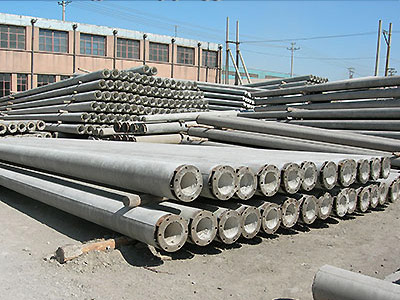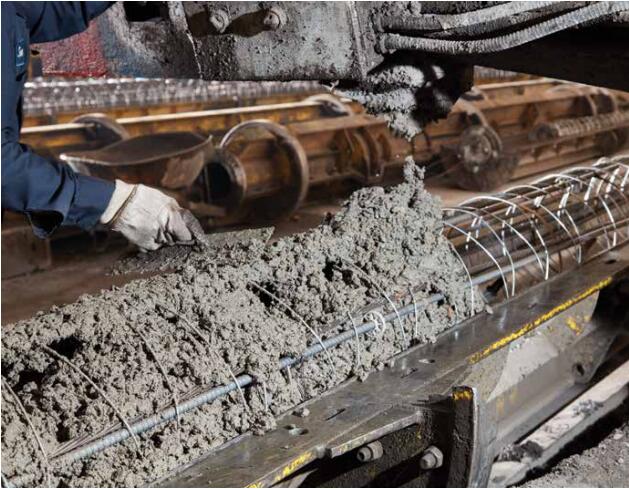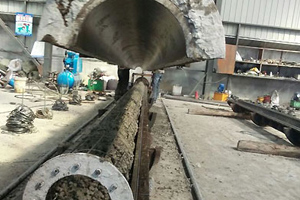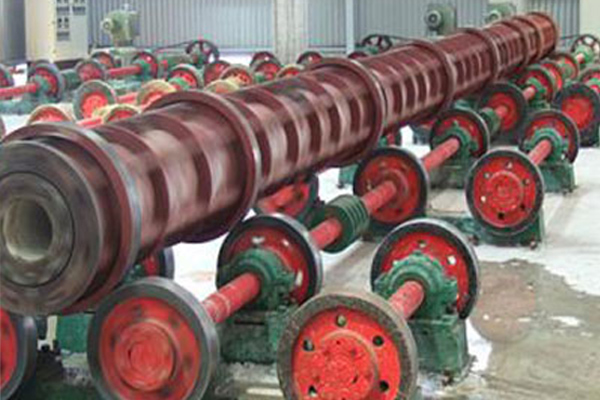The centrifuge is in the implementation international JC/T882 1,996 foundations, especially for the production annular reinforced concrete telephone pole, distribution, and drainage pipe manufactures. Its principle is in makes the centrifugal force using the object which the circular motion produces, causes the concrete to carry on the synthesis dense processing, enables in the unit concrete mixture through the centrifuge high speed rotation to obtain the quite big dense energy, can enable the concrete compactness in a shorter time to meet the anticipated requirements.







Concrete pumps are a necessary tool for any construction or demolition professionals. They are used to pump concrete and other materials up and down through pipes.
As the construction industry advances, so do the types of equipment used in the field. One such example is the use of concrete pumps. Concrete pumps have evolved over time, from small, hand-held pumps to large, mechanized machines capable of pumping much larger volumes of material.
The type of pump you choose will depend on the task at hand. For example, if you need to pump water up a hill, you would need a water pump. If you are pumping concrete, however, you would need a concrete pump.
Concrete pumps come in a variety of sizes and shapes, and they all have specific features that make them suitable for certain tasks. This article will discuss some of the different types of concrete pumps and their characteristics, so that you can choose the right one for your needs.
A concrete pump is a machine that helps to move concrete from the truck to the site. It consists of two main parts: the motor and the pump. The motor drives the pump, which creates a force that moves the concrete.
There are several types of concrete pumps, each with its own characteristics. Some concrete pumps are designed to move large chunks of concrete quickly, while others are designed to move small pieces of concrete slowly.
Concrete pumps can be used in a number of different situations, including construction, road repair, and mining. They are essential tools in many fields, and can help to speed up the process of getting projects done.
There are a number of benefits to using a concrete pump. One of the main benefits is that a concrete pump can help you to quickly and easily move large amounts of concrete. This is especially important if you need to make repairs or build new structures.
Another benefit of using a concrete pump is that it is efficient. This means that it can move a lot of concrete at once without having to use a lot of energy. This is helpful if you want to make repairs or build new structures quickly and without wasting resources.
Finally, a concrete pump is durable. This means that it can take a lot of abuse and still work properly. This is important if you need to use the pump often or if you want to keep it in good condition for years to come.
There are a number of different types of concrete pumps on the market, each with its own benefits. Here are the three most common types:
1. Drum Pump: A drum pump is the oldest type of concrete pump and is often used for small jobs. It uses a rotating drum to move the concrete and is slow but efficient.
2. Rotary Hammer Pump: A rotary hammer pump is faster than a drum pump and is more suited for larger jobs. It uses a hammer to break up the concrete and then pumps it using a vane system.
3. Piston Pump: A piston pump is the most recent type of concrete pump and is used for high-volume projects. It uses pistons to move the concrete and is fast but less efficient than other types of pumps.
When choosing a concrete pump, it is important to consider the specific needs of your project. There are many different types of concrete pumps available on the market, so it can be difficult to decide which one is right for you. Here are some tips to help you choose the right concrete pump for your project:
1. Research your options. There are a variety of different concrete pumps available on the market, so it can be difficult to choose one that is right for your project. If you have any questions about which pump will be best for your specific needs, feel free to contact us at [email protected]. We would be happy to help you find the perfect concrete pump for your project.
2. Consider the size of your project. Some pumps are designed for larger projects, while others are designed for smaller projects. Make sure to choose a pump that is appropriate for the size of your project.
3. Consider the type of material you will be using. Some pumps are designed specifically for using concrete, while others are designed for using other materials such as rocks or sand.
4. Consider the power requirements of your project. Some pumps require more power than others do, so make sure to
When using a concrete pump to put concrete in a mm to mm pipe, you should use Type IV or V concrete. Type IV concrete is used when the concrete is being poured into an existing pipe or structure. It is also used when the pipe is going to be used for water, gas, or oil extraction. Type V concrete is used when the pipe is new and will be used for traffic or pedestrian transportation.
If you have a broken pavement in your mm to mm concrete pump s pipe area, you can use a concrete pump to fix it. The concrete pump will create a new foundation for the pavement and prevent it from further breaking.
To use the concrete pump, you first need to determine the size of the hole that has been made. You then need to fill the hole with cement and water until it reaches the required height. Once the hole is filled, you can start pumping the concrete into it using the concrete pump.
If you're looking to install a new concrete pump system, be sure to find the right size pipe for the job. This guide offers tips on how to choose the right pipe size and help you figure out what other tools you'll need to get the installation done correctly. If you're not sure where to start, give us a call and we'll be happy to help.
2mm to 10mm concrete pump s pipe